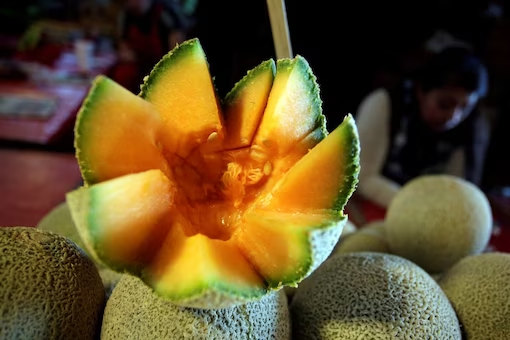
Hundreds of people in the US and Canada have been sickened in a growing outbreak of salmonella poisoning linked to contaminated cantaloupe. (Credits: Reuters)
Amidst the festive season, a recent report revealed the unfortunate death of a seventh Canadian due to salmonella poisoning just before the celebratory gatherings for elaborate meals. The Public Health Agency of Canada (PHAC) confirmed that all salmonella-related fatalities have been linked to the consumption of cantaloupes branded as Malichita and Rudy. The agency reported a total of 164 cases of salmonella infection linked to these specific brands and their associated fruits.
According to PHAC, an estimated four million Canadians suffer from food poisoning annually, with symptoms such as vomiting, stomach pain, and nausea being commonly reported. Chef David Wolfman, an instructor at George Brown College, highlighted the prevalence of food-related illnesses during the bustling holiday period.
Wolfman emphasized that ensuring proper food handling practices stands as the most crucial preventive measure against food poisoning. Maintaining food at a safe temperature, particularly within the range of -15 to 60 degrees Celsius (or four to 140 degrees Fahrenheit) for meat, before and after cooking, is imperative to limit bacterial growth.
"When food remains within that temperature danger zone, bacteria tend to multiply more rapidly," Wolfman explained.
The chef cautioned against potential scenarios leading to bacterial growth, such as extended waits at the grocery store, prolonged transportation of purchased holiday turkey or allowing a cooked bird to linger at room temperature beyond a few hours (commencing once removed from the oven). PHAC guidelines emphasize that cooked food should not remain unrefrigerated for more than two hours.
Wolfman further stressed the importance of refraining from refreezing defrosted food unless it has undergone proper cooking in between. The recommended method for defrosting frozen meat, according to Wolfman and PHAC, is within the refrigerator. Subsequently, ensuring thorough cooking of the meat is crucial.
"I rely on a digital thermometer," shared Wolfman, drawing from over four decades of culinary experience. "In my opinion, it's one of the best tools available." For assessing meat doneness, Wolfman suggested using a thermometer at the turkey's coldest spot, typically between the shoulders, as bones in this region take longer to cook than the protein. Otherwise, the middle of the meat serves as the ideal spot for temperature assessment.
The Canadian government has provided a list of recommended internal temperatures for different types of meat to ensure safe consumption.
Addressing a common source of food poisoning—cross-contamination—Wolfman emphasized the significance of using separate cutting boards and utensils for raw and cooked meats. PHAC also advocates for the separate storage of various types of raw meat to prevent cross-contamination.
Even during routine meal preparations like making meatloaf, Wolfman stated that he consistently wears gloves and adheres to thorough handwashing protocols before and after handling raw meat, ensuring stringent hygiene practices to mitigate health risks associated with foodborne illnesses.
Amidst this salmonella outbreak linked to specific cantaloupes, health authorities urge the public to exercise caution and adhere to stringent food safety measures to minimize the risk of food poisoning during the holiday season.















